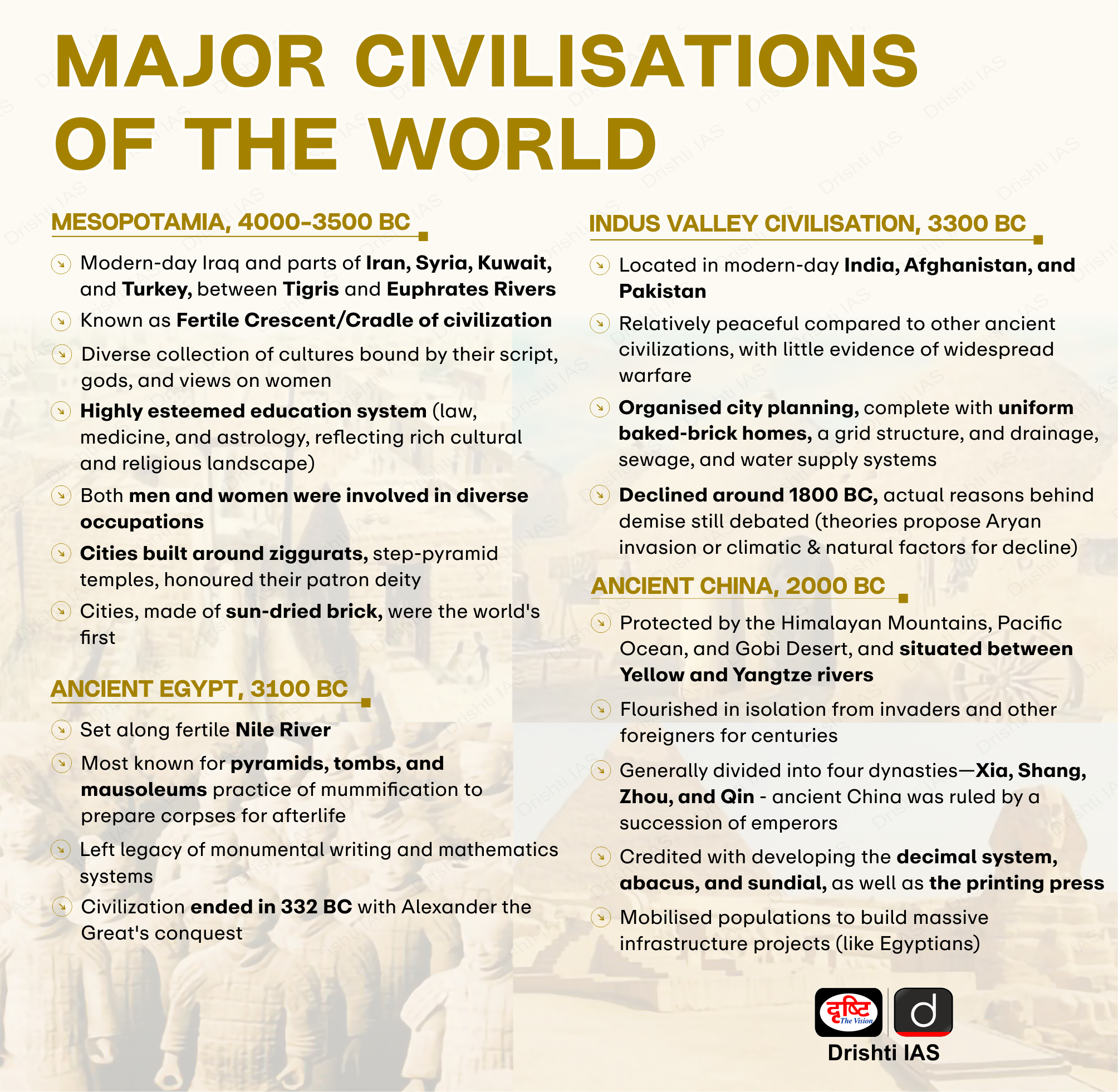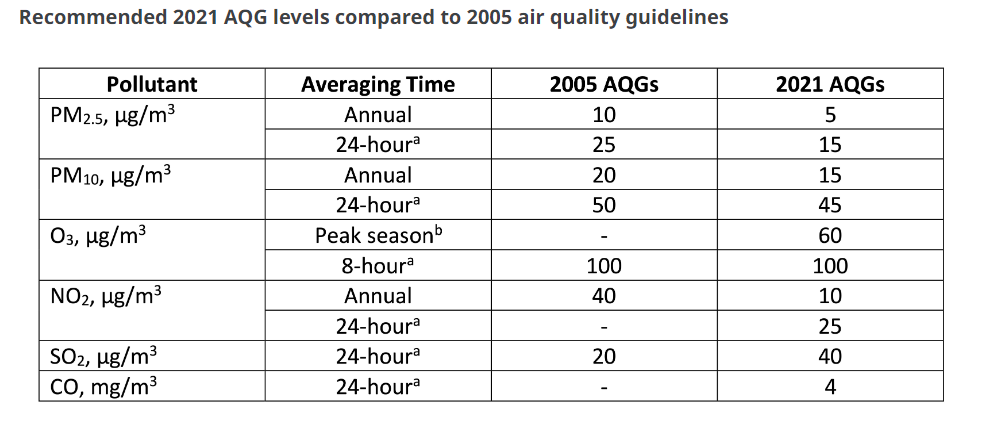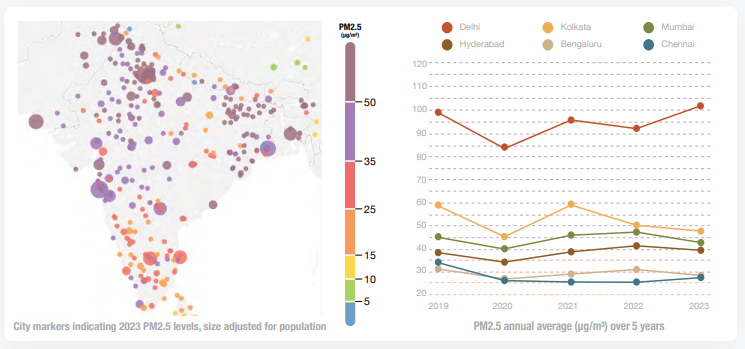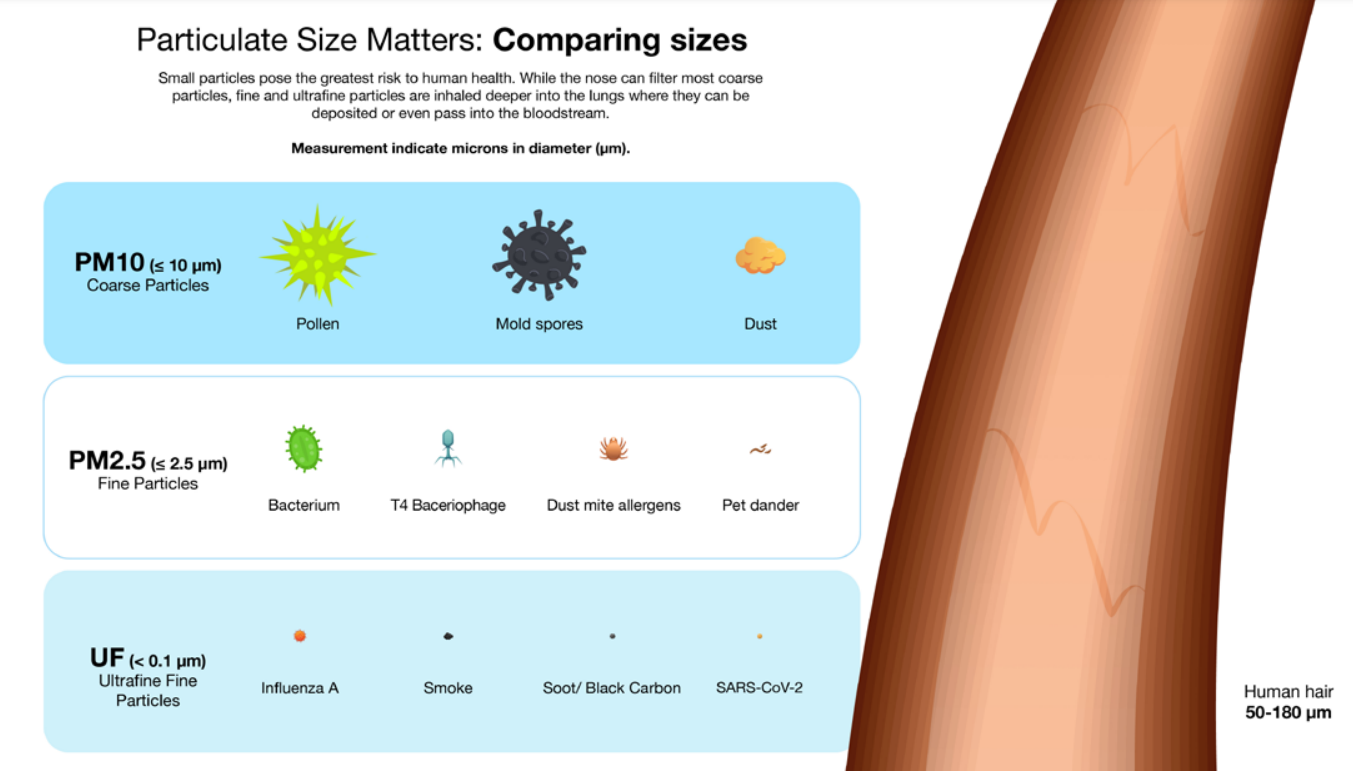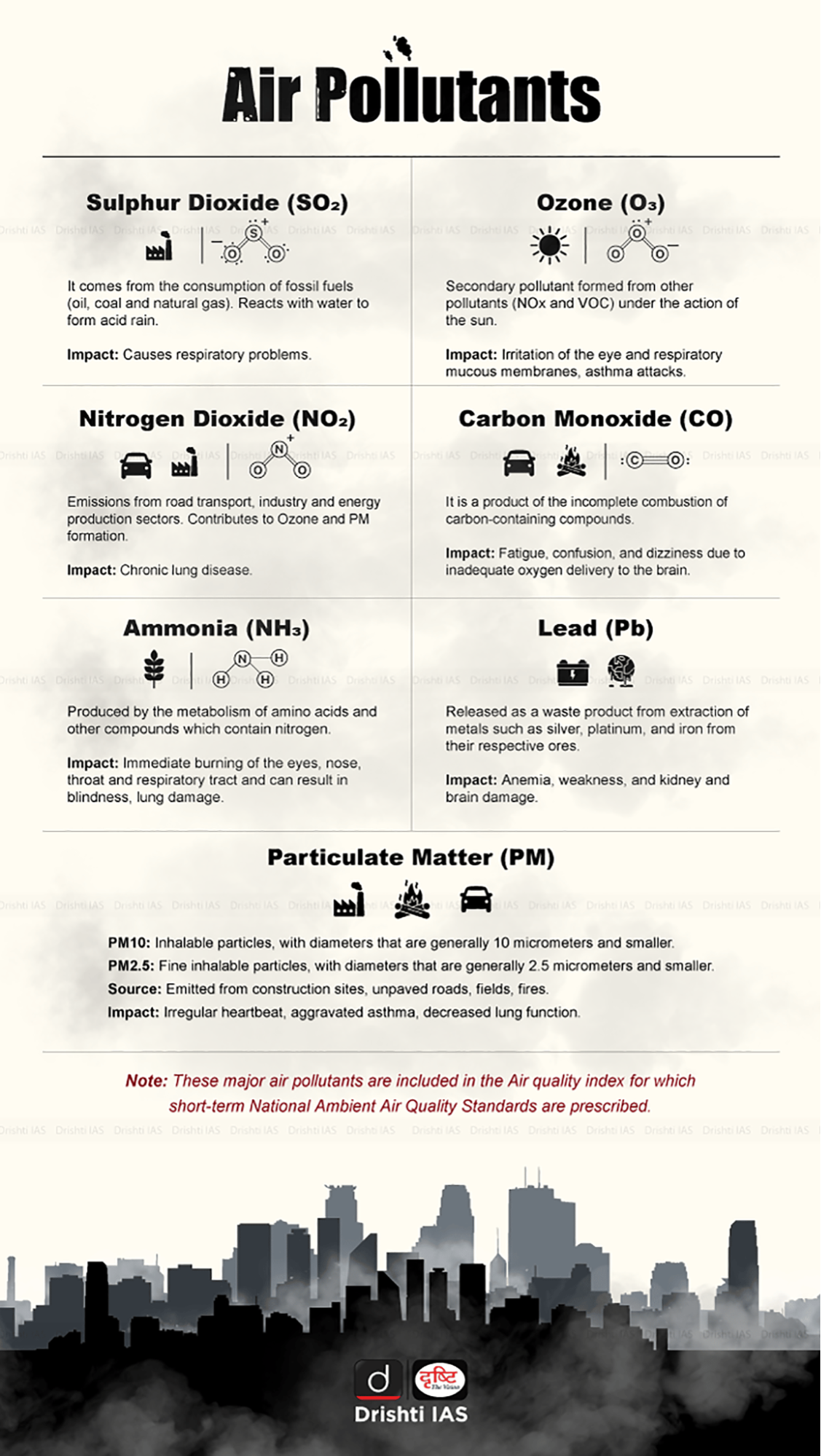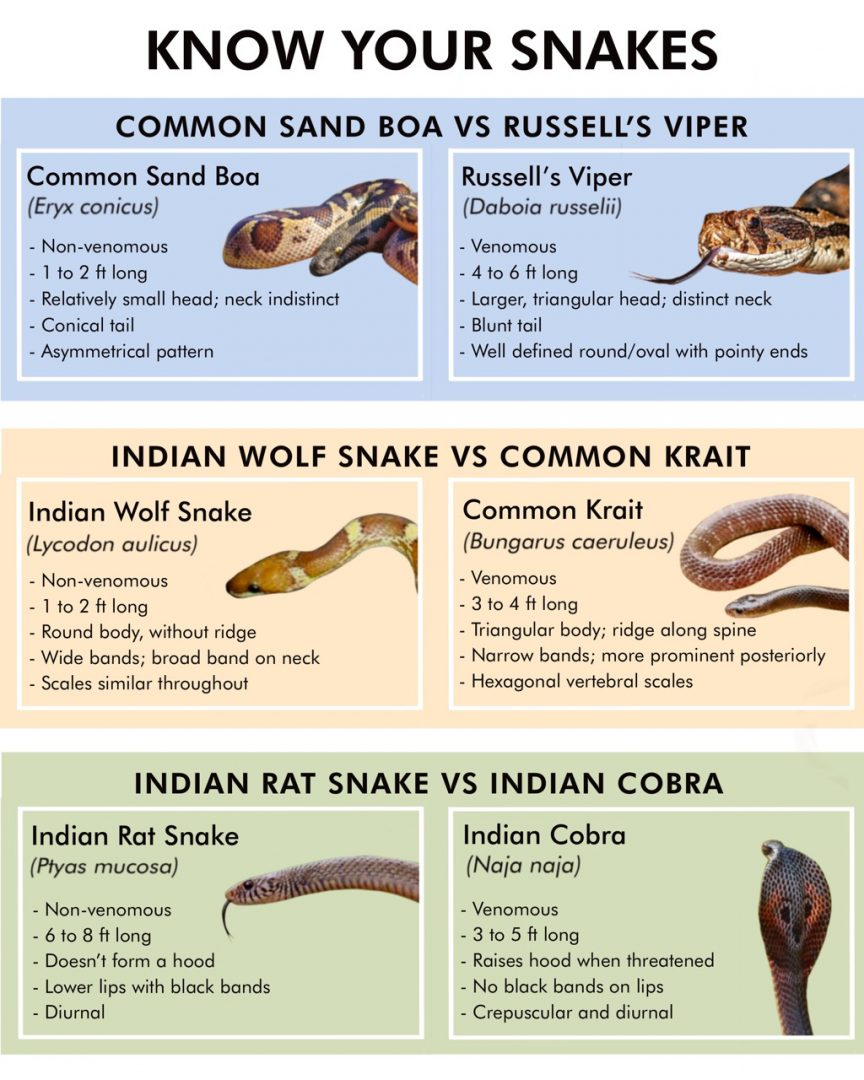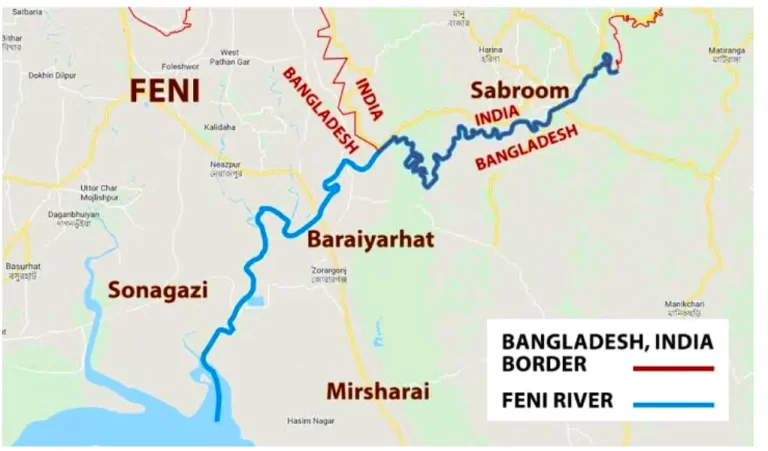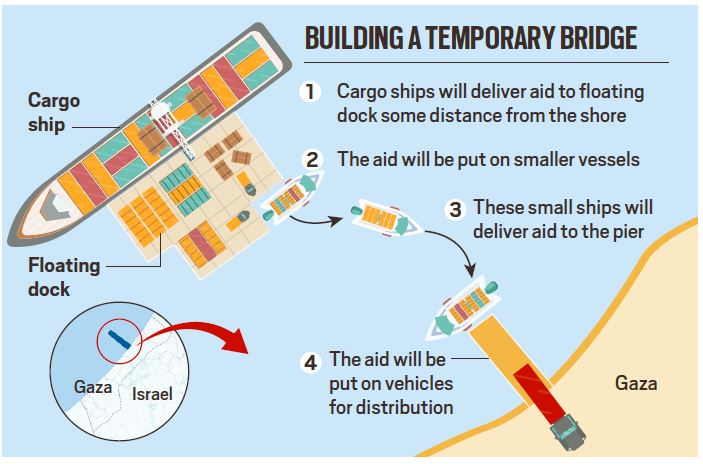Model Code of Conduct
For Prelims: MCC, Representation of People Act,1951 , Electoral Bonds,
For Mains: Evolution of MCC, Importance and criticisms of MCC in elections.Electoral Practices, Electoral reforms, Ensuring democracy through MCC,Electoral Funding
Why in News?
Recently, the Model Code of Conduct (MCC) has come into force with the announcement of voting dates for the Lok Sabha elections 2024 by the Election Commission of India (ECI), marking a significant aspect of electoral governance.
What is MCC and its Evolution?
- About:
- The MCC is a consensus document. The political parties have themselves agreed to keep their conduct during elections in check and to work within the Code.
- It helps the EC in keeping with the mandate it has been given under Article 324 of the Constitution, which gives it the power to supervise and conduct free and fair elections to the Parliament and State Legislatures.
- The MCC is operational from the date on which the election schedule is announced until the date of the result announcement.
- The government cannot announce any financial grants, promise construction of roads or other facilities, and make any ad hoc appointments in government or public undertaking during the time the Code is in force.
- Enforceability of MCC:
- Though the MCC does not have any statutory backing, it has come to acquire strength in the past decade because of its strict enforcement by the EC.
- Certain provisions of the MCC may be enforced by invoking corresponding provisions in other statutes such as the Indian Penal Code (IPC) 1860, Code of Criminal Procedure (CrPC) 1973, and Representation of Peoples’s Act (RPA) 1951.
- Though the MCC does not have any statutory backing, it has come to acquire strength in the past decade because of its strict enforcement by the EC.
- Evolution of MCC:
- Kerala was the first state to adopt a code of conduct for elections. In 1960, before the Assembly elections in the state, the administration prepared a draft code covering important aspects of electioneering such as processions, political rallies, and speeches.
- In 1974, the ECI released a formal MCC. It also set up bureaucratic bodies at the district level to oversee its implementation. Before 1977, MCC guided only political parties and candidates.
- In 1979, the Election Commission learned of ruling parties misusing power like monopolising public spaces and using public money for advertisement. The Election Commission revised MCC to include ruling political parties.
- The revised MCC had seven parts, with one for the ruling parties' behaviour after the election announcement.
- Part I: General good behaviour for candidates and parties.
- Parts II and III: Rules for public meetings and processions.
- Parts IV and V: Guidelines for behaviour on polling day and at polling booths.
- The MCC has been revised on several occasions since 1979, with the last time being in the year 2014.
- Key Provisions of MCC:
- General Conduct:
- No party or candidate shall include in any activity that may aggravate existing differences or cause tension between different castes and communities, religious or linguistic.
- Similarly, Section 123(3) of the Representation of the People Act, 1951, disallows the usage of religion, race, caste, community, or language to promote enmity or hatred among the people and use of it as a political tool.
- Criticisms directed towards other political parties should be restricted to an evaluation of their policies, historical performance, and initiatives, refraining from personal attacks.
- No party or candidate shall include in any activity that may aggravate existing differences or cause tension between different castes and communities, religious or linguistic.
- Meetings and Processions:
- Parties must inform the local police authorities of the venue and time of any meeting to enable the police to make adequate security arrangements.
- If two or more candidates plan processions along the same route, the political parties must establish contact in advance to ensure that the processions do not clash.
- Carrying and burning effigies representing members of other political parties is not allowed.
- Polling Day:
- Only voters and those with a valid pass from the EC are allowed to enter polling booths.
- All authorised party workers at polling booths should be given suitable badges or identity cards.
- Identity slips supplied by them to voters shall be on plain (white) paper and shall not contain any symbol, name of the candidate or the name of the party.
- The EC will appoint observers to whom any candidates may report problems regarding the conduct of the election.
- Party in Power:
- The MCC incorporated certain restrictions in 1979, regulating the conduct of the party in power. Ministers must not combine official visits with election work or use official machinery for the same.
- General Conduct:
What are the Issues Associated with MCC?
- Enforcement Challenges: Enforcement of the MCC can be inconsistent or inadequate, leading to violations that may go unpunished due to lack of statutory backing.
- The ECI opposes the legalisation of the MCC, citing the need for swift completion of elections within approximately 45 days, making legal enforcement impractical due to lengthy judicial processes.
- Ambiguity: Certain provisions of the MCC may be vague or open to interpretation, leading to confusion among political parties and candidates.
- Limited Scope: Critics argue that the MCC's scope should be expanded to cover a wider range of issues, including electoral funding, social media usage, and hate speech.
- Timing Issues: The MCC comes into effect only during election periods, leaving room for misconduct outside of these periods.
- Impact on Governance: Some argue that the MCC's restrictions on government announcements and activities during election periods may hinder the functioning of governance.
- Need for Reform: There are calls for reforming the MCC to address its shortcomings and make it more effective in ensuring fair and transparent elections.
Way Forward
- Strengthen Enforcement: Enhance mechanisms for enforcing MCC guidelines to ensure compliance by all political parties.
- Clarify Provisions: Improve clarity and specificity of MCC rules to minimise ambiguity and facilitate better understanding and adherence. Thus, need for a codified and comprehensive MCC.
- Expanding Scope as per New-age Needs: Consider broadening the MCC's coverage to address emerging issues such as digital campaigning and electoral funding transparency.
- Legalising MCC: Evaluate proposals to legally institutionalise the MCC, providing it with statutory backing for enhanced effectiveness and enforceability.
- In 2013, the Standing Committee on Personnel, Public Grievances, Law, and Justice proposed legally binding the MCC and integrating it into the RPA 1951.
- Dinesh Goswami Committee on Electoral Reforms (1990) suggested that the weakness of the MCC could be overcome by giving it statutory backing and making it enforceable through law
- Public Awareness: Launch campaigns to educate voters, political parties, and candidates about the importance of MCC compliance and its role in fostering fair elections.
- Continuous Review: Establish a framework for regular evaluation and adaptation of the MCC to address evolving electoral dynamics and challenges.
Conclusion
- The Model Code of Conduct (MCC) serves as a compass for democracy but faces challenges with declining commitment and increasing violations. Legalising it could empower the Election Commission to address corruption and ensure fair elections, essential for upholding the integrity and credibility of democratic processes.
Read More- Transparency in Election Commission of India
UPSC Civil Services Examination, Previous Year Question (PYQ)
Prelims
Q. Consider the following statements: (2017)
- The Election Commission of India is a five-member body.
- Union Ministry of Home Affairs decides the election schedule for the conduct of both general elections and bye-elections.
- The Election Commission resolves the disputes relating to splits/mergers of recognised political parties.
Which of the statements given above is/are correct?
(a) 1 and 2 only
(b) 2 only
(c) 2 and 3 only
(d) 3 only
Ans: (d)
Mains:
Q. Discuss the role of the Election Commission of India in the light of the evolution of the Model Code of Conduct. (2022)
World Air Quality Report 2023
For Prelims: World Air Quality Report, World Health Organization, WHO Air Quality Guidelines, Particulate Matter, Air Quality Index
For Mains: Initiatives taken by India for Controlling Air Pollution, Environmental Pollution & Degradation, Initiatives Taken to Control Air Pollution
Why in News?
India has been identified as the world’s third most polluted country, as per the World Air Quality Report 2023 by Swiss organisation IQAir.
What are the Key Highlights of the World Air Quality Report 2023?
- India's Air Quality Ranking:
- Ranked as the world's third most polluted country, with an average annual PM2.5 concentration of 54.4 micrograms per cubic meter.
- Bangladesh and Pakistan surpassed India in pollution levels, becoming the most and second most polluted countries, respectively.
- 9 out of the top 10 most polluted cities in the world are from India.
- India's air quality deteriorated compared to the previous year, with Delhi emerging as the world's most polluted capital city for the fourth consecutive time.
- Begusarai in Bihar is labelled as the world's most polluted metropolitan area, with an average PM2.5 concentration of 118.9 micrograms per cubic meter.
- Health Impacts and WHO Guidelines:
- Around 136 million Indians (96% of the Indian population) face PM2.5 concentrations (seven times) higher than the World Health Organization's recommended levels of 5 micrograms per cubic meter.
- Over 66% of Indian cities have reported annual averages higher than 35 micrograms per cubic metre (µg/m3).
- PM2.5 pollution, primarily from burning fossil fuels, is linked to increased rates of heart attack, stroke, and oxidative stress, with severe health implications.
- Around 136 million Indians (96% of the Indian population) face PM2.5 concentrations (seven times) higher than the World Health Organization's recommended levels of 5 micrograms per cubic meter.
- Ranked as the world's third most polluted country, with an average annual PM2.5 concentration of 54.4 micrograms per cubic meter.
- Global Air Quality:
- Seven countries that met the WHO annual PM2.5 guideline (annual average of 5 µg/m3 or less) included Australia, Estonia, Finland, Grenada, Iceland, Mauritius, and New Zealand.
- The report states that Africa continues to be the most underrepresented continent, with a third of its population lacking access to air quality data.
- Some countries, including China and Chile, reported decreases in PM2.5 pollution levels, indicating progress in combating air pollution.
- Pollution does not stay confined to its source, with prevailing winds distributing it across regions, emphasising the need for international cooperation in addressing air quality issues.
- Global Impact of Air Pollution:
- Air pollution causes approximately seven million premature deaths worldwide annually. It contributes to approximately one in every nine deaths worldwide.
- PM2.5 exposure leads to health issues like asthma, cancer, stroke, and mental health complications.
- Exposure to elevated levels of fine particles can impair cognitive development in children, lead to mental health issues, and complicate existing illnesses, including diabetes.
.png) |
 |
What are the WHO Air Quality Guidelines?
- Pollutants Covered:
- The World Health Organization (WHO) regularly updates its evidence-based air quality guidelines to safeguard public health from the ongoing threat of air pollution. The most recent update occurred in 2021, revising the guidelines that were originally published in 2005.
- The guidelines cover both particulate matter (PM) and gaseous pollutants, including PM2.5, PM10, ozone (O3), nitrogen dioxide (NO2), sulfur dioxide (SO2), and carbon monoxide (CO).
Particulate Matter (PM)
- Particulate matter, or PM, refers to a complex mixture of extremely small particles and liquid droplets suspended in the air. These particles come in a wide range of sizes and can be made up of hundreds of different compounds.
- PM10 (coarse particles) - Particles with a diameter of 10 micrometres or less.
- PM2.5 (fine particles) - Particles with a diameter of 2.5 micrometres or less.
- Air pollution
- It is the contamination of the environment by chemicals, physical or biological agents. Sources include household devices, vehicles, industrial facilities, and forest fires.
- Major pollutants include particulate matter, carbon monoxide, ozone, nitrogen dioxide, and sulfur dioxide, causing respiratory diseases and high mortality rates.
- WHO data shows that 99% of the global population breathes air exceeding guideline limits, with low- and middle-income countries suffering the most.
- Air quality is closely linked to the earth’s climate and ecosystems, and policies to reduce air pollution offer a win-win strategy for both climate and health.
- All of India’s 1.4 billion people (100% of the country’s population) are exposed to unhealthy levels of ambient PM2.5.
- The health impacts of pollution also represent a heavy cost to the economy. Lost output from premature deaths and morbidity attributable to air pollution accounted for economic losses of USD 36.8 billion was 1.36% of India's gross domestic product (GDP).
- It is the contamination of the environment by chemicals, physical or biological agents. Sources include household devices, vehicles, industrial facilities, and forest fires.
What are the Initiatives Taken for Controlling Air Pollution?
- National Clean Air Programme (NCAP).
- Bharat Stage Emission Standards.
- Solid Waste Management Rules,2016.
- System of Air Quality and Weather Forecasting and Research (SAFAR) Portal.
- Air Quality Index.
- Graded Response Action Plan.
- National Air Quality Monitoring Programme (NAMP).
- Commission for Air Quality Management.
- Turbo Happy Seeder (THS) Machine.
Way Forward
- Regulatory Strengthening: Implement and enforce strict air quality standards and emission limits, with heavy penalties for non-compliance.
- Transition to Clean Energy: Accelerate the adoption of renewable energy sources, phase out fossil fuels, and invest in sustainable transportation options like electric vehicles.
- Industrial Improvement: Mandate clean technologies in industries, promote waste minimisation, and offer incentives for pollution control equipment.
- Public Awareness and Research: Conduct awareness campaigns, involve the public in decision-making, invest in research for innovative pollution control technologies, and foster public-private partnerships.
- Global Cooperation and Support: Collaborate internationally to address transboundary pollution, support developing nations with technical assistance and funding, and prioritise air quality management as a collective responsibility.
UPSC Civil Services Examination, Previous Year Questions (PYQs)
Prelims
Q. In the cities of our country, which among the following atmospheric gases are normally considered in calculating the value of the Air Quality Index? (2016)
- Carbon dioxide
- Carbon monoxide
- Nitrogen dioxide
- Sulphur dioxide
- Methane
Select the correct answer using the code given below:
(a) 1, 2 and 3 only
(b) 2, 3 and 4 only
(c) 1, 4 and 5 only
(d) 1, 2, 3, 4 and 5
Ans: (b)
Mains
Q. Describe the key points of the revised Global Air Quality Guidelines (AQGs) recently released by the World Health Organisation (WHO). How are these different from its last update in 2005? What changes in India’s National Clean Air Programme are required to achieve revised standards? (2021)
New Electric Vehicle Policy 2024
For Prelims: Electric Vehicles, Make in India campaign, Production Linked Incentive, FAME I and II, Electric Mobility Promotion Scheme (EMPS) 2024
For Mains: Electric Vehicles Challenges, Government Policies & Interventions, Mobilization of Resources
Why in News?
In a significant development, the Government of India has greenlit a strategic policy aimed at positioning India as a prime manufacturing hub for electronic vehicles (e-vehicles).
- This initiative is not only geared towards bolstering the nation's technological prowess but also aligns with the overarching goal of fortifying the 'Make in India' campaign.
What is the Centre’s New Electric Vehicle Policy?
- Highlights of the Policy:
- Duty Reduction for EV Imports:
- The policy slashes customs duty rate to 15% (applicable to Completely Knocked Down - CKD units) will be imposed on EVs with a minimum CIF (Cost, Insurance, and Freight) value of USD 35,000 or above for a total period of 5 years.
- Import Cap and Investment Prerequisites:
- While allowing reduced-duty imports, the policy caps the number of imported EVs at 8,000 per year.
- Manufacturers must invest a minimum of Rs 4,150 crore (∼USD 500 Mn) to avail duty concessions.
- There's no ceiling on the maximum investment, incentivising substantial capital infusion into the sector.
- Manufacturing and Value Addition Requirements:
- To promote local manufacturing, companies must set up operational facilities within 3 years and achieve a minimum domestic value addition (DVA) of 25% within the same period, escalating to 50% within 5 years from the date of issuance of approval letter by the Ministry of Heavy Industries.
- DVA is a percentage share of value that represents the value an economy adds to goods and services produced for export.
- To promote local manufacturing, companies must set up operational facilities within 3 years and achieve a minimum domestic value addition (DVA) of 25% within the same period, escalating to 50% within 5 years from the date of issuance of approval letter by the Ministry of Heavy Industries.
- Maximum Import Allowance:
- If the investment exceeds USD 800 Mn, up to 40,000 EVs can be imported, not exceeding 8,000 per year.
- Companies can carry over any unused annual import limits.
- If the investment exceeds USD 800 Mn, up to 40,000 EVs can be imported, not exceeding 8,000 per year.
- Duty Limit:
- The total duty waived on imported EVs will be capped at the investment made or Rs 6484 Cr (equal to incentive under the Production Linked Incentive (PLI) scheme for Automobile and Auto Components), whichever is lower.
- Bank Guarantees:
- The bank guarantee will only be returned upon achieving 50% DVA and making an investment of at least Rs 4,150 crore or to the extent of duty foregone in 5 years, whichever is higher.
- Duty Reduction for EV Imports:
- Key Benefits:
- The policy stimulates innovation and progress in electric vehicle technology.
- It promotes indigenous manufacturing, aligning with the government's Make in India campaign.
- By promoting EV adoption, the policy helps reduce crude oil imports and narrows the trade deficit.
- The shift to electric vehicles contributes to mitigating air pollution, particularly in urban areas.
- The new EV policy aligns with India's climate goals of reducing emissions intensity by 45% by 2030 and achieving net-zero emissions by 2070.
- Positive Impact on Health and Environment.
- Impact:
- The policy aims to attract global players like Tesla by offering investment incentives and import duty reductions.
- Global EV manufacturers, including Tesla, Inc., had been advocating for tariff concessions as a prerequisite for establishing manufacturing plants in India.
- The new policy effectively fulfils this demand, signalling India's commitment to attracting foreign investment in the EV sector.
- With India currently being the world’s third-largest automobile market and one of the fastest-growing, the EV sector is poised to emerge as a major category within the automotive industry.
- The automotive sector's substantial contribution to India’s GDP underscores its strategic importance.
- The policy aims to attract global players like Tesla by offering investment incentives and import duty reductions.
The EV market in India
- The Indian EV market is witnessing rapid growth, with EV sales surging by over 45% in 2024 despite regulatory changes.
- Total EV registrations surpassed 1.5 million units by the end of 2023, a significant increase from just over 1 million in the previous year.
- The growth in EV registrations has elevated India's overall EV market penetration to 6.3%, indicating significant progress in EV adoption.
- Indian automakers are making substantial investments in electrification, encouraged by the government's plan to eventually phase out subsidies.
What are the Other Initiatives Related to Electric Vehicles in India?
- Electric Mobility Promotion Scheme (EMPS) 2024:
- The Indian government has introduced the EMPS 2024 to promote the purchase of electric two-wheelers (e2W) and three-wheelers (e3W). With a budget of Rs 5 billion, it will replace the FAME-2 scheme and will be effective from April to July 2024, with the possibility of being replaced or extended thereafter.
- The main goal is to increase the adoption of e2Ws and e3Ws while gradually reducing industry reliance on subsidies.
- The subsidy is now reduced to Rs 5,000 per kilowatt-hour of battery capacity, down from Rs 10,000, and capped at Rs 10,000 per e-2W, which is a reduction of 15% from the price under FAME-II and is expected to cover 3,33,387 e-2Ws.
- The scheme does not cover electric four-wheelers (e4Ws) and e-buses.
- The main goal is to increase the adoption of e2Ws and e3Ws while gradually reducing industry reliance on subsidies.
- The Indian government has introduced the EMPS 2024 to promote the purchase of electric two-wheelers (e2W) and three-wheelers (e3W). With a budget of Rs 5 billion, it will replace the FAME-2 scheme and will be effective from April to July 2024, with the possibility of being replaced or extended thereafter.
- Phased Manufacturing Programme (PMP):
- The Ministry of Heavy Industries has introduced a PMP to promote indigenous manufacturing of Electric Vehicles and their components over time.
- A graded duty structure is envisioned to incentivise local manufacturing.
- National Mission on Transformative Mobility and Storage:
- The aim of the mission is to drive strategies for transformative mobility and Phased Manufacturing Programmes for electric vehicles, electric vehicle Components and Batteries.
- EV30@30 campaign:
- India is among a handful of countries that support the global EV30@30 campaign, which aims for at least 30% of new vehicle sales to be electric by 2030.
- Faster Adoption and Manufacturing of (Hybrid and) Electric Vehicles (FAME) – I and II.
- Production Linked Incentive (PLI) scheme for Automobile and Auto Components.
- National Electric Mobility Mission Plan (NEMMP).
What are the Challenges for the EV market in India?
- Charging Infrastructure:
- Limited Availability:
- There aren't enough charging stations, especially outside major cities.
- This creates a lack of accessibility and makes long-distance travel impractical for many EV owners.
- High Installation and Maintenance Costs:
- Setting up charging stations requires significant investment, and maintaining them adds to the operational cost.
- This can limit the number of operators willing to invest, hindering infrastructure growth.
- Range Anxiety and Long Charging Times:
- The limited availability of charging stations, coupled with the relatively short driving range of EVs compared to gasoline vehicles, creates anxiety for potential buyers. Filling a gas tank is quick while charging an EV can take hours.
- Limited Availability:
- Cost:
- High Upfront Cost of EVs:
- Electric vehicles themselves are more expensive than comparable gasoline models, due to battery and technology costs. This is a major hurdle for budget-conscious Indian consumers.
- High Battery Costs:
- Battery technology is still evolving, and production costs remain high. This significantly impacts the overall price of EVs.
- High Upfront Cost of EVs:
- Customer Support and Awareness:
- Lack of Service Options:
- The service network for EVs is still developing. Finding trained technicians and service centres equipped for EVs can be challenging for some owners.
- Lack of Consumer Awareness:
- Some potential EV buyers may not be familiar with the benefits of electric vehicles, or they may have misconceptions about them.
- This can make it difficult to convince them to switch from gasoline.
- Lack of Service Options:
- Supply Chain and Policy:
- Supply Chain Challenges:
- India relies on imports for critical EV components like lithium and cobalt. Disruptions in the global supply chain can affect EV production and costs.
- Policy Uncertainty:
- Government policies and regulations are not constant. This can make it difficult for automakers and consumers to plan for the future.
- However, recent initiatives like EMPS aim to provide some stability and incentivize EV adoption, though the long-term impact remains to be seen.
- Subsidy Dependence:
- While initiatives like EMPS 2024 can help reduce the upfront cost of EVs, over-reliance on subsidies can create uncertainty in the market if they are reduced or phased out in the future.
- Supply Chain Challenges:
- Other Challenges:
- Uncertain Consumer Behaviour: The long-term economic and environmental benefits of EVs are clear, but it's uncertain how quickly consumers will adopt this new technology.
- Lack of Standardisation: The lack of standardised charging protocols can create confusion for consumers and limit interoperability between different EV models and charging stations.
Way Forward
- Expand the charging infrastructure network in urban and rural areas to address underdeveloped infrastructure challenges. Encourage private investments in high-speed, commercial-grade chargers to meet increasing EV demand.
- The government plans to implement the battery swapping policy announced in the Union Budget in 2022 can enhance the charging infrastructure.
- This policy involves exchanging discharged batteries for fully charged ones, making EV charging as fast as refuelling conventional vehicles.
- Promote private sector innovation in lightweight and high energy density batteries for improving EV driving range. Offer incentives and tax credits for battery technology research and development.
- Conduct educational campaigns to inform the public about the benefits of electric vehicles and the importance of transitioning to sustainable transportation options.
- Offer attractive leasing and rental schemes to facilitate easy access to EVs and mitigate resistance to change.
- Implement regulatory frameworks and standards to ensure the safety and quality of EVs and charging infrastructure.
- Promote the adoption of smart digital solutions to enhance the EV ecosystem, including fleet management systems and charger management platforms.
UPSC Civil Services Examination, Previous Year Questions (PYQs)
Mains
Q. How is efficient and affordable urban mass transport key to the rapid economic development in India? (2019)
Profits and Poverty: The Economics of Forced Labour
For Prelims: Profits and Poverty: The Economics of Forced Labour, International Labour Organization (ILO), Forced Labour.
For Mains: Profits and Poverty: The Economics of Forced Labour.
Why in News?
Recently, the International Labour Organization (ILO) released a report titled ‘Profits and poverty: The economics of forced labour’, which has found that Forced Labour generates illegal profits worth USD 36 billion per year.
What is Forced Labour?
- According to ILO, forced or compulsory labour is “all work or service that is exacted from any person under the menace of any penalty and for which said person has not offered himself voluntarily”.
- Forced labour is defined, for purposes of measurement, as work that is both Involuntary and under penalty or menace of a penalty (coercion).
- Involuntary work refers to any work undertaken without the free and informed consent of the worker.
- Coercion refers to the means used to compel someone to work without their free and informed consent.
What are the Key Highlights of the Report?
- Increase in Illegal Profits:
- Forced labour generates illegal profits worth USD 36 billion per year, which is a 37% increase since 2014.
- This increase is attributed to both a growth in the number of people forced into labour and higher profits generated from the exploitation of victims.
- Regional Distribution of Illegal Profits:
- Total annual illegal profits from forced labour are highest in Europe and Central Asia (USD 84 billion), followed by Asia and the Pacific (USD 62 billion), the Americas (USD 52 billion), Africa (USD 20 billion), and the Arab States (USD 18 billion).
- Profit Generation Per Victim:
- Traffickers and criminals are estimated to generate close to USD 10,000 per victim, up from USD 8,269 a decade ago.
- Forced commercial sexual exploitation accounts for more than two-thirds (73%) of the total illegal profits, despite accounting for only 27% of the total number of victims in privately imposed labour.
- Sectors with Highest Illegal Profits:
- After forced commercial sexual exploitation, the sector with the highest annual illegal profits from forced labour is industry (USD 35 billion), followed by services (USD 20.8 billion), agriculture (USD 5.0 billion), and domestic work (USD 2.6 billion).
- The Industry Sector includes Mining and quarrying, manufacturing, construction and utilities.
- The Services Sector encompasses activities related to wholesale and trade, accommodation and food service activities, art and entertainment, personal services, administrative and support services, education, health and social services, and transport and storage.
- The Agriculture Sector includes forestry, hunting as well as the cultivation of crops, livestock production and fishing.
- Domestic work is performed in third party households.
- After forced commercial sexual exploitation, the sector with the highest annual illegal profits from forced labour is industry (USD 35 billion), followed by services (USD 20.8 billion), agriculture (USD 5.0 billion), and domestic work (USD 2.6 billion).
- Increase in Number of People in Forced Labour:
- There were 27.6 million people engaged in forced labour on any given day in 2021, representing an increase of 2.7 million since 2016.
- Recommendations:
- Need for Comprehensive Approach: The report emphasises the urgent need for investment in enforcement measures to stem illegal profit flows and hold perpetrators accountable.
- It highlights the importance of strengthening legal frameworks, providing training for enforcement officials, extending labour inspection into high-risk sectors, and better coordination between labour and criminal law enforcement.
- Addressing Root Causes: While law enforcement measures are crucial, the report underscores that forced labour cannot be ended through enforcement actions alone. It must be part of a comprehensive approach that prioritises addressing root causes and safeguarding victims.
- Promoting Fair Recruitment Processes: Promoting fair recruitment processes is deemed crucial as forced labour cases can often be traced back to recruitment abuses. Ensuring the freedom of workers to associate and to bargain collectively is also essential in combating forced labour.
- Need for Comprehensive Approach: The report emphasises the urgent need for investment in enforcement measures to stem illegal profit flows and hold perpetrators accountable.
What are India's Initiatives to Deal with Forced Labor?
- Article 23:
- It prohibits trafficking in human beings, including trafficking for the purpose of forced labour, slavery, or exploitation.
- It recognizes the inherent dignity and rights of individuals, ensuring protection against such practices.
- Article 24 of the Constitution:
- No child below the age fourteen years shall be employed in work in any factory or mine or engaged in any other hazardous employment.
- Platform for Effective Enforcement for No Child Labour (PENCIL) Portal 2017:
- It is an electronic platform that aims at involving Centre, State, District, Governments, civil society and the general public in achieving the target of child labour free society.
- It has been launched for the effective implementation of Child Labour Act and National Child Labour Project (NCLP) Scheme.
- Bonded Labour System (Abolition) Act 1976:
- The Act extends to the whole of India but is implemented by respective state governments. It provides for an institutional mechanism at the district level in the form of Vigilance Committees.
- Vigilance committees advise District Magistrate (DM) to ensure the provisions of this act are properly implemented.
- The State Governments/UTs may confer, on an Executive Magistrate, the powers of a Judicial Magistrate of the first class or second class for the trial of offences under this Act.
- The Act extends to the whole of India but is implemented by respective state governments. It provides for an institutional mechanism at the district level in the form of Vigilance Committees.
- Central Sector Scheme for Rehabilitation of Bonded Labourers (2021):
- The Ministry of Labour and Employment revamped the scheme for rehabilitation of bonded labourers (2016) in 2021, providing an immediate financial assistance of Rs 30,000 to the rescued person by the district administration.
- The scheme also provides for the creation of a Bonded Labour Rehabilitation Fund at the district level, with a permanent corpus of at least Rs 10 lakh at the disposal of the District Magistrate.
- This fund can be renewed to extend immediate help to the released bonded labourers.
What is the International Labour Organization?
- About:
- The International Labour Organization (ILO) is the only tripartite UN agency, since 1919. It brings together governments, employers and workers of 187 member States, to set labour standards, develop policies and devise programmes promoting decent work for all women and men.
- Established:
- By the 1919 Treaty of Versailles as an affiliated agency of the League of Nations.
- Became the first affiliated specialised agency of the United Nations in 1946.
- Headquarters: Geneva, Switzerland
- Founding Mission: Social justice is essential to universal and lasting peace.
- Promotes internationally recognized human and labour rights.
- Nobel Peace Prize:
- Received in 1969 for
- improving peace among classes
- Pursuing decent work and justice for workers
- Providing technical assistance to other developing nations
- Received in 1969 for
UPSC Civil Services Examination, Previous Year Question (PYQ)
Prelims:
Q. International Labour Organization’s Conventions 138 and 182 are related to (2018)
(a) Child Labour
(b) Adaptation of agricultural practices to global climate change
(c) Regulation of food prices and food security
(d) Gender parity at the workplace
Ans: (a)
Mains:
Q. Examine the main provisions of the National Child Policy and throw light on the status of its implementation. (2016)
Use of Snake Venom for Intoxication
Why in News?
Recently, a few people have been arrested by the police on charges of allegedly providing snake venom for a rave party under the Wild Life (Protection) Act, 1972, and the Indian Penal Code (Bharatiya Nyay Sanhita, 2023).
What are Key Facts About Snake Venom and its Use?
- About:
- Out of nearly 3400 snake species globally, India hosts around 300 snake species inhabiting varying habitats across the country.
- Types of Snake: The species falls under 4 families namely - Colubridae, Elapidae, Hydrophiidae, and Viperidae.
- Venomous Snake: Out of 300 species found in India, more than 60 are venomous, 40+ mildly venomous, and about 180 non-venomous.
- Snake venoms (highly toxic saliva) are the secretions of venomous snakes, which are synthesised and stored in special glands.
- Properties of Venom: Snake venom is a complex mixture of enzymes, peptides and proteins of low molecular mass with specific chemical and biological activities.
- Snake venom contains several neurotoxic, cardiotoxic, and cytotoxic nerve growth factors, lectins, disintegrins, haemorrhaging and many other different enzymes.
- Use of Snake Venom:
- Certain particular snake species like cobras, kraits and Black mambas are used for medicinal and intoxication purposes.
- Medicinal use:
- The use of snake venom in different pathophysiological conditions has been mentioned in Ayurveda, homoeopathy and folk medicine.
- It is also used for the treatment of thrombosis, arthritis, cancer and many other diseases.
- One of the most well-known examples is the use of snake venom in antivenom production.
- Recreation Use:
- Snake venom is often used as a recreational drug, despite less scientific research. Its smuggling is a multi-million dollar illicit industry.
- Various forms of neurotoxin found in cobra venom, particularly, bind on nicotinic acetylcholine receptors (nAChRs) that are widely distributed in the human brain area and are involved in the euphoric or rewarding experience.
- People also experience “muscular paralysis and analgesia” (loss of the ability to feel pain while still conscious), and drowsiness.
- Regulation:
- The use and trade of most psychoactive ‘substances of abuse’ come under the Narcotic Drugs and Psychotropic Substances (NDPS) Act, but not snake venom.
- The NDPS Act, 1985, prohibits a person from producing, possessing, selling, purchasing, transporting, storing, and/or consuming any narcotic drug or psychotropic substances.
- The matters related to snakes and their venom come under the purview of the Wildlife Protection Act.
- Section 120A (criminal conspiracy) of the IPC also covers crimes related to snake venom for recreational use.
- The use and trade of most psychoactive ‘substances of abuse’ come under the Narcotic Drugs and Psychotropic Substances (NDPS) Act, but not snake venom.
Note:
- Intoxicate substances act on the central nervous system and alter an individual’s mood, perception and consciousness.
- Depending on the nature of psychoactive substances, they produce either modest type of psychological effects such as euphoria, anxiolysis, dissociation, emotional blunting, etc. or more unusual effects such as hallucination, synaesthesia, altered space-time continuum, and mystical experience.
- Some of the most commonly used hallucinogens include mushrooms, cannabis, mescaline, lysergic acid diethylamide (LSD), dimethyltryptamine (DMT) and methylenedioxymethamphetamine (MDMA).
- Some of the commonly used psychoactive fauna are hallucinogenic fish such as clownfish and Rabbitfish, amphibians such as toads, ants such as Red Harvester Ants, reptiles such as the Indian Wall Lizard, and liver and bone marrow of giraffe.
Read more: Snakebite Envenoming
UPSC Civil Services Examination, Previous Year Question (PYQ)
Prelims:
Q 1. Consider the following statements: (2019)
- Some species of turtles are herbivores.
- Some species of fish are herbivores.
- Some species of marine mammals are herbivores.
- Some species of snakes are viviparous.
Which of the statements given above are correct?
(a) 1 and 3 only
(b) 2, 3, and 4 only
(c) 2 and 4 only
(d) 1, 2, 3 and 4
Ans: (d)
Q 2. King Cobra is the only snake that makes its own nest. Why does it make its nest? (2010)
(a) It is a snake-eater and the nest helps attract other snakes
(b) It is a viviparous snake and needs a nest to give birth to its offspring
(c) It is an oviparous snake and lays its eggs in the nest and guards the nest until they are hatched
(d) It is a large, cold-blooded animal and needs a nest to hibernate in the cold season
Ans: (c )
Q 3. For which one of the following snakes is the diet mainly composed of other snakes? (2008)
(a) Krait
(b) Russell’s viper
(c) Rattlesnake
(d) King Cobra
Ans: (d)
Mains:
Q. Can overuse and free availability of antibiotics without Doctor’s prescription, be contributors to the emergence of drug-resistant diseases in India? What are the available mechanisms for monitoring and control? Critically discuss the various issues involved. (2014)
Criminal Case Management System and Sankalan App
Why in News?
In a significant move to enhance India's capability in combating terrorism and organized crime, the Ministry of Home Affairs inaugurated a digital Criminal Case Management System (CCMS) developed by the National Investigation Agency (NIA) in New Delhi.
- Alongside the CCMS, a mobile app ‘Sankalan’, a compendium of New Criminal Laws by the National Crime Records Bureau (NCRB) was also launched.
What is the Criminal Case Management System (CCMS)?
- The CCMS is an innovative digital platform that streamlines and enhances the management of criminal cases, particularly those related to terrorism and organised crime.
- The CCMS software aims to standardise investigations and compile terror-related data across India.
- CCMS serves as a user-friendly and customizable browser-based software designed to facilitate coordination among law enforcement agencies, improve the efficiency of investigations, and enhance justice delivery.
- This system enables the integration, organisation, and digitalisation of data generated during investigations, providing a comprehensive tool for investigators, prosecutors, and other stakeholders involved in the criminal justice process.
- CCMS fosters stronger cooperation between central and state agencies, facilitating seamless information sharing.
Sankalan App
- The Sankalan app has been designed to navigate through new criminal laws as a bridge between old and new criminal laws.
- This app will work as a comprehensive guide for all stakeholders. The app will work in offline mode as well and its availability has been ensured in far-flung areas so that all stakeholders can have access to desired information around the clock.
What is the National Investigation Agency (NIA)?
- About:
- The NIA is a federal agency established by the Indian government to investigate and prosecute crimes related to terrorism, insurgency, and national security matters.
- It was formed in 2009 following the Mumbai terrorist attacks, operating under the National Investigation Agency (NIA) Act, 2008, and falls under the jurisdiction of the Ministry of Home Affairs.
- The NIA (Amendment) Act 2019 allows the NIA to investigate crimes committed outside India, following international treaties and laws.
- The NIA can now investigate additional offences such as human trafficking, cyber-terrorism, and crimes under various acts.
- At present NIA is functioning as the Central Counter Terrorism Law Enforcement Agency in India.
- Headquarters: Delhi.
- Functions:
- Collects, analyses, and disseminates intelligence related to terrorism and national security.
- Coordinates with law enforcement agencies nationally and internationally in matters of terrorism and national security.
- Conducts capacity-building programs for law enforcement agencies and other stakeholders.
UPSC Civil Services Examination, Previous Year Question (PYQ)
Q. The Indian government has recently strengthed the anti-terrorism laws by amending the Unlawful Activities(Prevention) Act, (UAPA), 1967 and the NIA Act. Analyze the changes in the context of the prevailing security environment while discussing scope and reasons for opposing the UAPA by human rights organizations. (2019)
Test-Firing of Indigenous 1500 HP Tank Engine
Recently, the Defence Secretary presided over the maiden test-firing of the country's first indigenously-made 1500 Horsepower (HP) engine for Main Battle Tanks at BEML Limited’s (formerly Bharat Earth Movers Limited) Engine division in Mysuru complex.
- The 1500 HP engine represents a paradigm shift in military propulsion systems, possessing cutting-edge features such as a high power-to-weight ratio, and operability in extreme conditions, including high altitudes, sub-zero temperatures and desert environments.
- Equipped with advanced technologies, the engine stands on par with the most advanced engines globally,
- India has many main battle tanks (MBTs), including the T-90M Bhishma, ARJUN MBT, and K-9 Vajra.
- BEML Limited, a ‘Schedule ‘A’ Company under the Ministry of Defence, plays a pivotal role and serves India’s core sectors like Defence, Rail, Power, Mining and Infrastructure.
Read more: Arjun MBT MK-1A
Sabroom
Recently, Prime Minister Narendra Modi virtually launched several developmental projects in Tripura including the inauguration of the state’s second integrated check post (ICP) (also known as Land Port) in Sabroom, which is Tripura’s southernmost tip bordering Bangladesh.
- About:
- Sabroom is located in South Tripura district in Tripura. It is located on the banks of the Feni River, which separates India and Bangladesh.
- It is connected to the Chittagong port of Bangladesh through Maitree Bridge on River Feni.
- It will enhance the transportation of passengers and goods between India and Bangladesh.
IceCube: Exploring Neutrinos from Earth's South Pole
The IceCube neutrino observatory at the Earth’s South Pole detected subatomic particles called neutrinos.
- Neutrinos are electrically neutral, undisturbed by even the strongest magnetic field, and rarely interact with matter, earning the nickname "ghost particle." As neutrinos travel through space, they pass unimpeded through matter - stars, planets and, for that matter, people.
- A neutrino is a fermion (an elementary particle with spin of ½) that interacts only via weak interaction and gravity.
- They are created in nuclear processes and also created when protons (subatomic particles) and (atomic) nuclei interact at very high energies.
- The ability to use particles like neutrinos in astronomy enables a more robust examination of the universe as many aspects of the universe are indecipherable using light alone.
- India-based Neutrino Observatory (INO): The INO Project is aimed at building a world-class underground laboratory with a rock cover to conduct basic research on neutrinos.
- The observatory will be located underground to provide adequate shielding to the neutrino detector from cosmic background radiation.
Read More- Pillars of Creation, James Webb telescope, Indian Neutrino Observatory
Severe Malnutrition Among Children
A recent study found the prevalence of ‘zero-food children’ in India at 19.3%, drawing attention to extreme food deprivation among children.
- Zero-food children refers to infants aged six months to 23 months who have not consumed any substantial food for a period of 24 hours.
- The study also ranks India as having the third highest percentage of zero-food children, above only Guinea (21.8%) and Mali (20.5%).
- Uttar Pradesh stands out as a significant hotspot for this crisis, with a high percentage of 'zero-food children.'
- According to the Global Hunger Index 2023, India topped the list of countries with the highest child-wasting rate in the world, at 18.7%.
- Also, According to the National Family Health Survey 5, 35.5% of children under age five years are stunted in India.
Read more: Combating Malnutrition in India
JLOTS Project
The US plans to deliver aid to Gaza from a floating dock at sea through the Joint Logistics Over-the-Shore Project (JLOTS). The goal is to deliver aid equivalent to two million meals a day to Gaza.
- JLOTS capabilities are used to transport cargo by sea when one or more ports cannot be operated or are not available for loading or unloading.
- Overall, JLOTS integrates infrastructure, logistics, security, and environmental considerations to facilitate effective disaster response and humanitarian aid delivery.
- The project will consist of two main components, a floating dock and a long pier with a causeway.
- The floating dock will be constructed using steel components delivered to the site by a roll-on, roll-off ship, a type of cargo vessel equipped with a platform for loading and unloading heavy cargo.
- The pier will connect to the shore, while the dock could be placed up to a kilometre away. This setup ensures that aid-carrying ships avoid the risk of getting stuck in shallow waters near the shore.
Read more- Israel-Hamas Conflict and its global impact, Israel-Palestine conflict
B200 Blackwell Chip
Nvidia (a US-based Company) has unveiled its latest artificial intelligence (AI) chip, the B200 ‘Blackwell’, which promises to revolutionise the AI market with its enhanced computational power and optimised performance.
- The B200 Blackwell chip is twice as powerful as Nvidia's current H100 'Hopper' chip for training AI models.
- Blackwell graphic processing unit (GPU) boasts 208 billion transistors, it can perform some computational tasks 30 times faster than the Hopper chip, leading to accelerated progress in AI development.
- Major tech giants like Google, Amazon, Microsoft, and OpenAI are expected to adopt the new chip for their cloud-computing services and AI products.
Read more: Revamping India's Semiconductor Design Scheme, Kairali AI Chip

